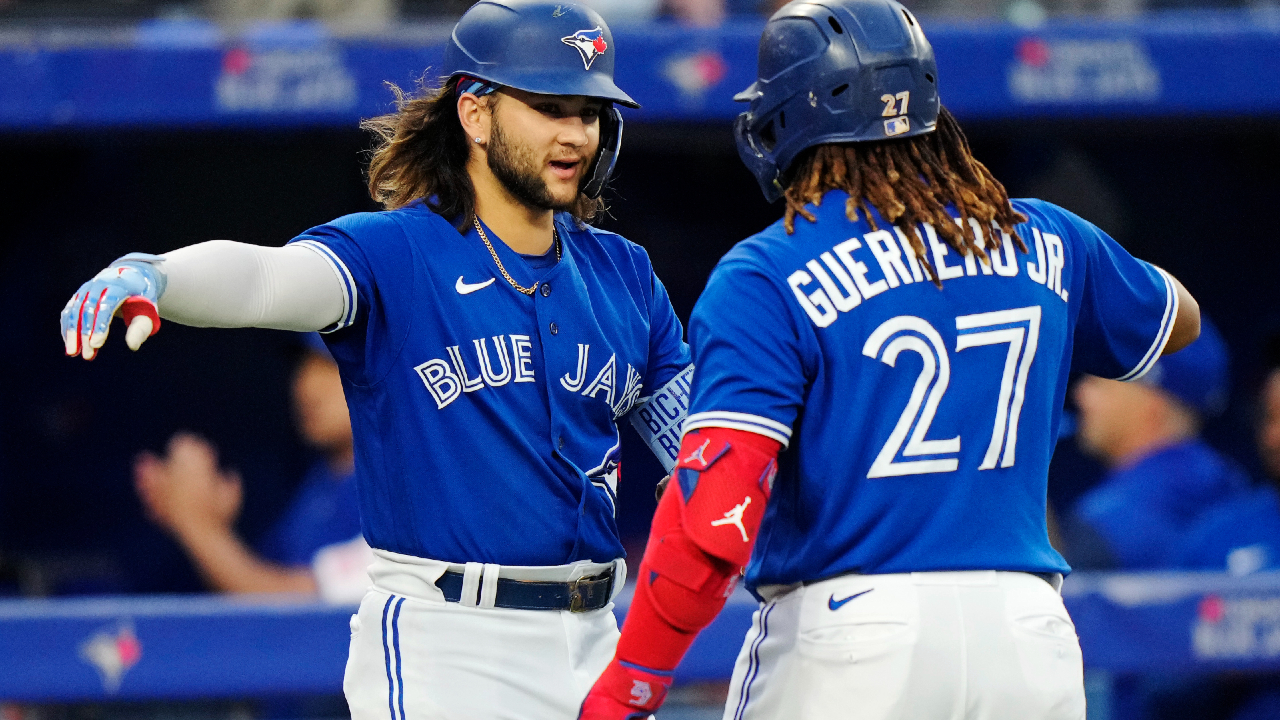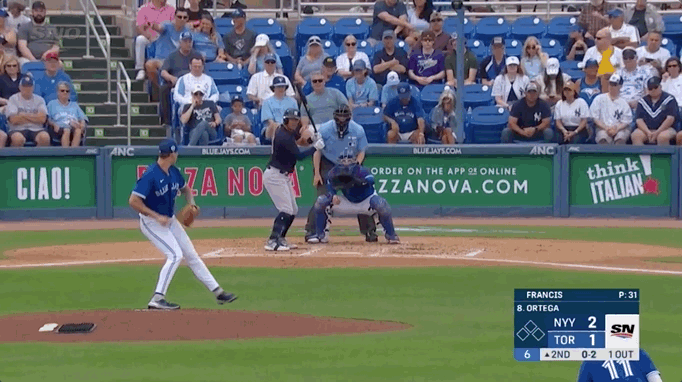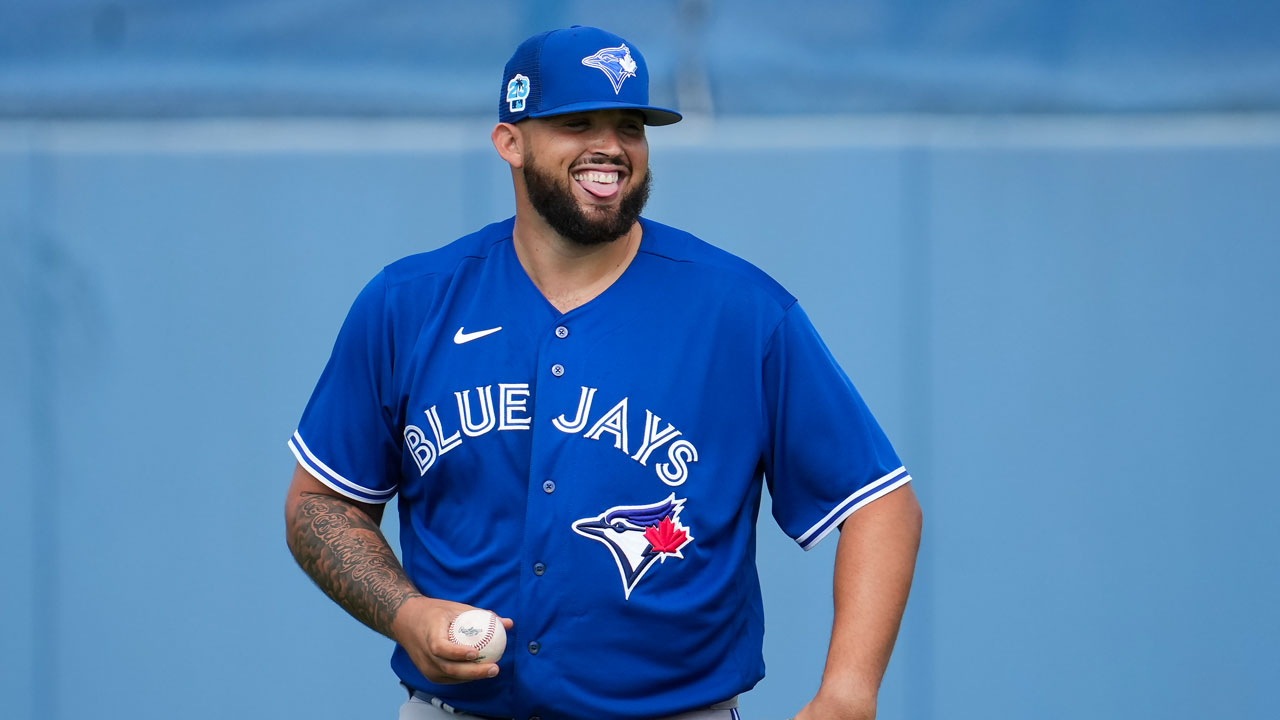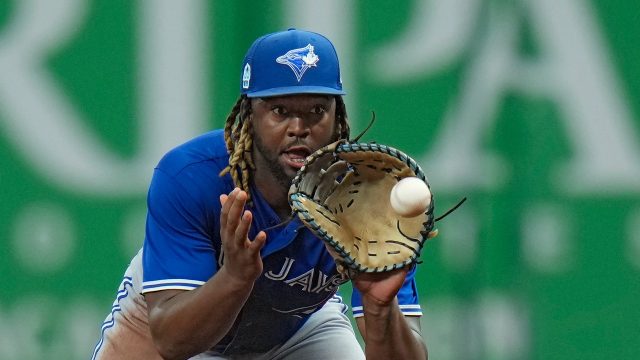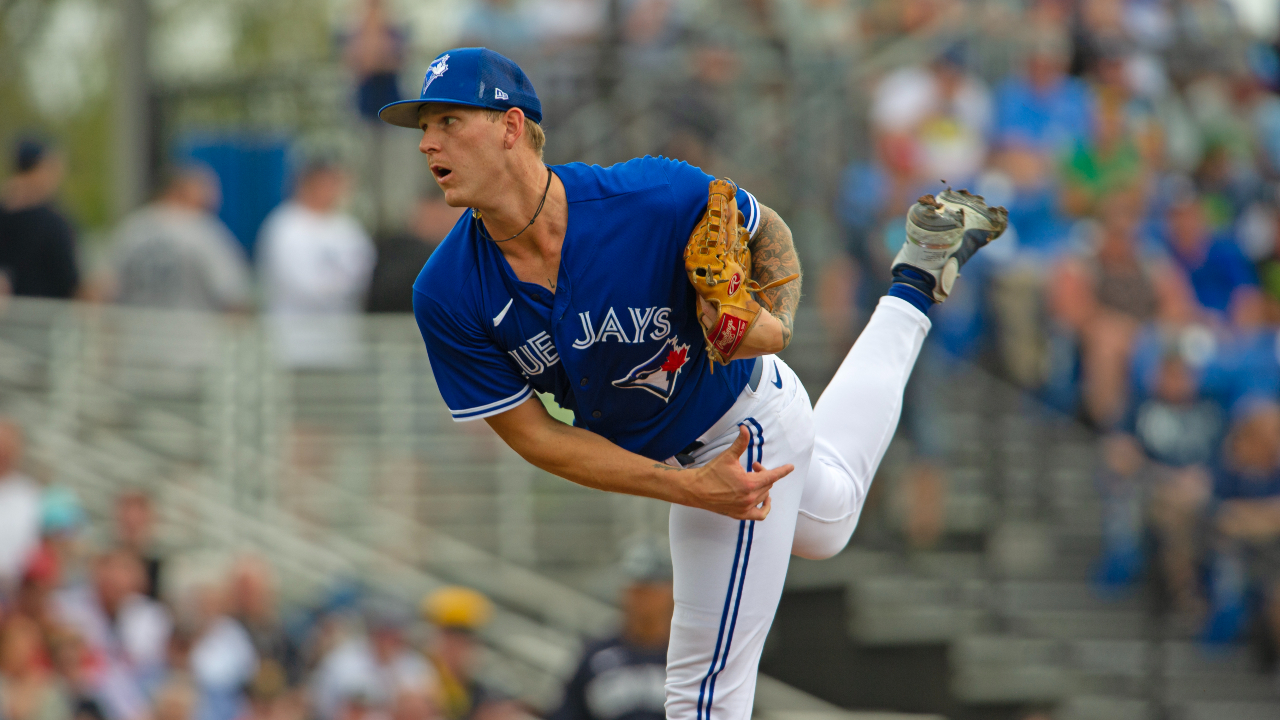
DUNEDIN, Fla. — Pitching in Puerto Rico this winter, Bowden Francis experienced some pretty wild stuff. There was a brawl in the stands one night. There were the hostile crowds trying to throw off his delivery with air horns. There was the mid-game delay when the mascot for Francis’s Criollos de Caguas got into it with the opposition’s dugout.
“There was always something crazy going on,” Francis says. “It was just another thing to work on — the mental game. Getting in your zone, getting in your Zen. Just finding success through those loud noises, those external things that are trying to knock you off your game. It’s just about staying inside and not letting those external factors affect the task at hand.
“You just try to breathe and be present. Because if you’re worried about all the stuff around you, you’re out of the game already.”
Francis has been thinking deeply about his game like this for some time. His pre-game routine includes mindfulness exercises and focused breathing. He’s been known to burn sage at his locker and walk barefoot into centre field on start days to meditate in the sun. On the mound, he utilizes breathwork techniques to control his heart rate when things aren’t going his way.
It’s all meant to help him remain stoic and poised in competition, performing with consistent mettle regardless of whether he’s striking out the side or giving up back-to-back bombs. But coming off a rough 2022 in which he ran a 6.59 ERA over 98.1 triple-A innings and was outrighted off Toronto’s 40-man roster, Francis wanted to delve deeper into the chaos. And the Puerto Rican Winter League provided a fitting environment.
Of course, Francis wanted to keep working on some mechanical things, too. Amidst his 2022 struggles, he’d gotten into the lab with Blue Jays developers to search for the tick or two of fastball velocity he’d lost from the time he entered pro ball in 2017. Using motion capture technology, the Blue Jays analyzed Francis biomechanically and found the issue. It was in his hips.
“We worked on it a lot during the year. I needed to stop being so linear. I wasn’t staying closed, I wasn’t coiling my hips towards second base,” Francis says. “I wasn’t using the slope of the mound. Now, I’m riding it down, getting into my hips at the right time. It’s all timing.”
To help instill the movement patterns he was trying to learn, the Blue Jays had Francis work with a Core Velocity Belt. The training tool uses a harness wrapped around the hips, attached to a long, kinetic bungee cord anchored to the ground, to force athletes to resist being pulled in one direction or another.
The more a pitcher practises their throwing motion while countering that tug, the more their muscle memory adapts to move that way without the external drag in games. It’s the same tool Lucas Giolito, Dylan Cease, and Carlos Rodon have credited for helping fine-tune their mechanics and juice velocity.
“I’d seen it before on social media. I know it’s really popular with the White Sox guys. So, I gave it a shot. And it definitely helped a lot. It let me find different ranges of motion,” Francis says. “It’s kind of like what a hitter would do as they coil and load up to swing. I used to be just up-and-down, straight to home. Now, my lower body is going towards second base a lot more. I’m just more collected over my back leg.
“It took a bunch of reps. Like, a bunch of reps. But I finally got to a place where I found that groove without thinking about it. You can’t think about it. You’ve got to just feel it.”
And once you feel it, velocity follows. Francis was operating in the 90-94 m.p.h. range last spring, topping out at 93 while making his MLB debut from Toronto’s bullpen in April. But towards the end of the season with Buffalo, he was consistently working between 91 and 95. And in Puerto Rico, that velocity range ticked up to 92-96.
In a short relief appearance last Tuesday against the Yankees, Francis sat 95 and reached 96.5. Four days later, facing New York again as a starter, Francis sat 94 but still hit 95 repeatedly over his three innings. Of the 48 pitches he threw, 36 were fastballs — 9 of which generated a swinging strike.
“His velo’s been really good the entire spring,” Blue Jays manager John Schneider said after Francis’s start against the Yankees. “The way he was coming after hitters, getting through the lineup a second time — I just loved it. Loved the conviction he was throwing with.”
That fastball-heavy approach is one Francis honed over the winter in Puerto Rico, where he was determined to challenge hitters with his best pitch until they proved they could hit it. More often than not, they couldn’t. Francis pitched to a 1.51 ERA over 35.2 winter ball innings, striking out 47 while walking only 9.
“Confidence is a big thing,” Francis says. “Going out there, having fun, being myself out there was a great time. It just helped me gain confidence in my pitches, confidence in myself. Having feel. Not taking that time off in the off-season, I feel like I have an advantage coming into camp with feel for my pitches. Especially with the heater.”
Francis’s fastball gets decent ride and a good amount of vertical movement, which lets him run it up-and-in to right-handed hitters. And he releases it from a three-quarter arm slot — unusually low for a pitcher of his height — which creates deception and perceived velocity for hitters unaccustomed to seeing pitches flying at them from the lanes he uses. It’s similar to how Chris Bassitt has leveraged his own unorthodox release to generate consistently weak contact with his deep arsenal.
Organizationally, the Blue Jays are perpetually on the hunt for pitchers with unique fastballs. Downhill sinkers thrown from unusually high angles. Gravity-fighting four-seamers riding off back-spin. Ones that approach the plate on a weird plane, confusing the eyes of hitters in the two-tenths of a second they have to make a swing decision. That can be enough to move pitches off barrels and soften the high exit velocities that create damage.
But velocity helps, too. And now that Francis is putting some legitimate heat behind his unique fastball, the Blue Jays are hopeful he can put last season’s struggles behind him.
The organization has been experimenting this spring with using one-time starters like Francis — think Thomas Hatch, Trent Thornton, Nate Pearson — in hybrid bulk roles that see them pitching multiple innings at various points in ballgames. Opening for a couple frames; taking the third trip through a lineup behind a starter; maybe the occasional shorter stint in the sixth or seventh if matchups make it particularly appealing.
It’s a valuable role in today’s matchup-driven game featuring shorter starts and more dynamic bullpens. And it’s one Francis could potentially fill at the major-league level if his fastball continues playing as well as it has. He plans to use it anywhere from 65-70 per cent of the time this season, working his big, mid-70’s curveball off of it. He has a high-70’s slider, too. But his fastball’s been so overpowering this spring, he hasn’t had much need for it.
It’s the best weapon a pitcher can have — an effective fastball. Somewhere along the line, Francis lost what made his play best. But through biomechanical labs, countless reps attached to a bungee cord, and winter ball’s hostile environment, he feels like he’s discovering it again. No one would ever accuse Francis of not thinking deeply enough. But this season, he figures simplicity is the way forward.
“I feel it on the mound. I feel gathered. I feel slow. I feel relaxed. Until that last second, when I just exhale, and slap it down,” Francis says. “I’m just trying to challenge hitters, attack them. If I can throw with full intent, I know the outcome will be in my favour.”


